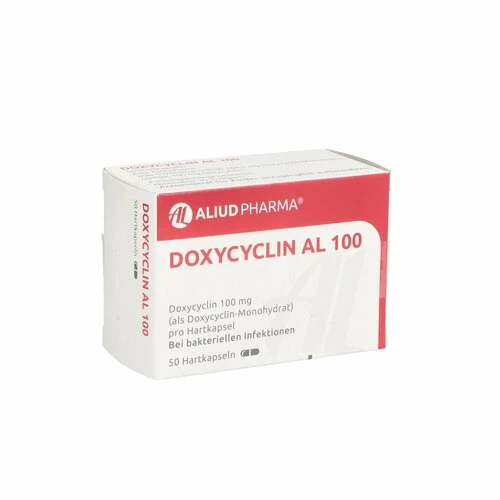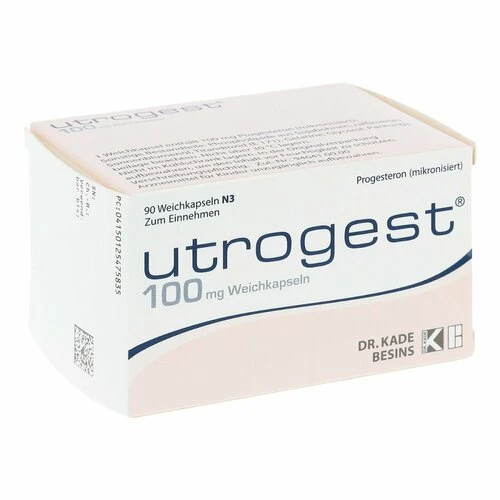The drug is a drug (antibiotic) from the tetracycline group. Doxycycline prevents the growth of bacteria that cause infections in the body and are sensitive to doxycycline.
It is used for treatment
respiratory tract and ear, nose and throat infections
acute attacks of chronic bronchitis
Sinus infection
Middle ear infection
some forms of pneumonia
urinary and genital infections
Urethritis
acute inflammation of the prostate
uncomplicated gonorrhea (gonorrhea)
Infections of female genital organs
Syphilis with penicillin allergy
Urinary tract infections
gastrointestinal tract infections
bile duct infections
skin infections, including infected severe forms of acne and facial roses
conjunctivitis and trachoma
diseases caused by Borrelia, such as erythema chronicum migrans and Lyme disease (infections caused primarily by tick bites)
more rare infections such as brucellosis, psittacosis, bartonellosis, listeriosis, rickettsiosis, melioidosis, plague, granuloma inguinale.
from other diseases:
Diseases associated with digestive disorders such as tropical sprue and Whipple’s disease.
The medicine cannot be taken
if you are allergic to doxycycline, other tetracyclines, or any of the other ingredients of this medicine.
patients with severe liver dysfunction
if you are being treated for acne at the same time as the active ingredient isotretinoin
during pregnancy and breastfeeding
children under 8 years old. Doxycycline should not be taken during dental development (pregnancy, infancy, or children under 8 years of age) because it may cause permanent discoloration of teeth (yellow-gray-brown) or affect tooth growth. In certain circumstances (such as serious or life-threatening illnesses), your doctor may decide that the benefits outweigh the risks and prescribe doxycycline for children under 8 years of age.
Always take this medication exactly as your doctor has told you. If you are unsure, consult your doctor or pharmacist.
The dosage and duration of treatment are determined by the doctor and depend, among other things, on the severity and location of the infection.
General dosage recommendations
1 tablet corresponds to 100 mg of doxycycline.
Children from 8 to 11 years old inclusive
For the treatment of acute infections in children 8 to 11 years of age inclusive, doxycycline should be used only if other drugs are not available or may be ineffective.
In these cases, the recommended dose is:
Children up to 45 kg.
On the first day, 4.4 mg per kg body weight (one dose or divided into 2 doses), then from the second day 2.2 mg per kg body weight (one dose or divided into 2 doses).
The length of treatment depends on the type of infection being treated.
For severe infections, up to 4.4 mg per kg of body weight should be prescribed throughout the entire treatment period.
Children over 45 kg
The dose should be the same as for adults: on the first day, 2 tablets (equivalent to 200 mg of doxycycline), then 1 tablet per day (equivalent to 100 mg of doxycycline).
The length of treatment depends on the type of infection being treated.
Adults and young people aged 12 to 17 years inclusive with a body weight (BW) of less than 70 kg.
on the first day 2 tablets and
Take 1 tablet each of the following days.
Patients with severe illnesses and adults weighing more than 70 kg take 2 tablets per day.
The duration of treatment depends on the course of the disease and should continue for at least 1–2 days after the symptoms of the disease have subsided. For streptococcal infections, treatment should continue for at least 10 days.
Special Dosage Recommendations
Infection: urethritis in men caused by gonococci 3)
Dosage (number of tablets/day): 2 tablets 1)
Duration of treatment: 7 days
Infection: epididymitis caused by gonococci 3)
Dosage (number of tablets/day): 2 tablets 1)
Duration of treatment: 10 days.
Infection: acute gonococcal infection of a woman 3)
Dosage (number of tablets/day): 2 tablets 1)
Duration of treatment: at least 7 days.
Infection: Syphilis (primary and secondary form in case of allergy to penicillin).
Dosage (number of tablets/day): 3 tablets.
Duration of treatment: 15 days.
Infection: skin diseases (acne and facial rose).
Dosage (number of tablets/day): 1 tablet.
Duration of treatment: 7 – 21 days 2)
Infection: Infection after a tick bite (Lyme disease, stage I).
Dosage (number of tablets/day): 2 tablets 1)
Duration of treatment: up to 3 weeks, but not less than 14 days.
1) Tablets with doxycycline 200 mg are available for this dosage.
2) You can then take 50 mg of doxycycline daily as maintenance therapy for another 2-3 weeks. Depending on the outcome of treatment, long-term treatment with low doses of doxycycline (50 mg per day) for up to 12 weeks may be used to treat acne.
3) If you have a gonococcal infection (gonorrhea), be especially careful when visiting your doctor to check the success of treatment 3-4 days after finishing treatment to avoid relapse.
Dosage in old age
There are no specific dosage recommendations.
Dosage for renal impairment
In patients with impaired renal function, dose reduction is usually not required.
If you took more than you should
To date, there have been no reports of cases of doxycycline poisoning. However, since overdose carries a risk of liver and kidney damage, as well as pancreatitis, you should consult a doctor if you have any suspicions.
When treating an overdose, the doctor will be guided by the clinical picture.
If you forget to take it
Do not take a double dose if you forget to take the previous dose.
If you forget to take a dose, continue taking the prescribed dose the next day.
If you stop taking it
It is important to take doxycycline for the entire intended treatment period. Do not stop taking it prematurely, even if you feel better, unless your doctor tells you to do so. If treatment is not completed, the infection may return.
















